Nestled along the windswept shores of Koekohe Beach on New Zealand’s Otago coast, the Moeraki Boulders have long piqued the curiosity of both locals and travelers. These remarkably spherical stones, ranging in size from a few centimeters to over two meters in diameter, seem like nature’s own marbles scattered along the shoreline. Their presence is both a visual spectacle and a geological mystery, inviting countless questions about their origins and formation. How did these nearly perfect spheres come to be? What natural processes shaped them over the millennia? Let’s delve into the captivating story of the Moeraki Boulders and uncover the secrets held within their stone layers.
Unraveling the Geological Puzzle
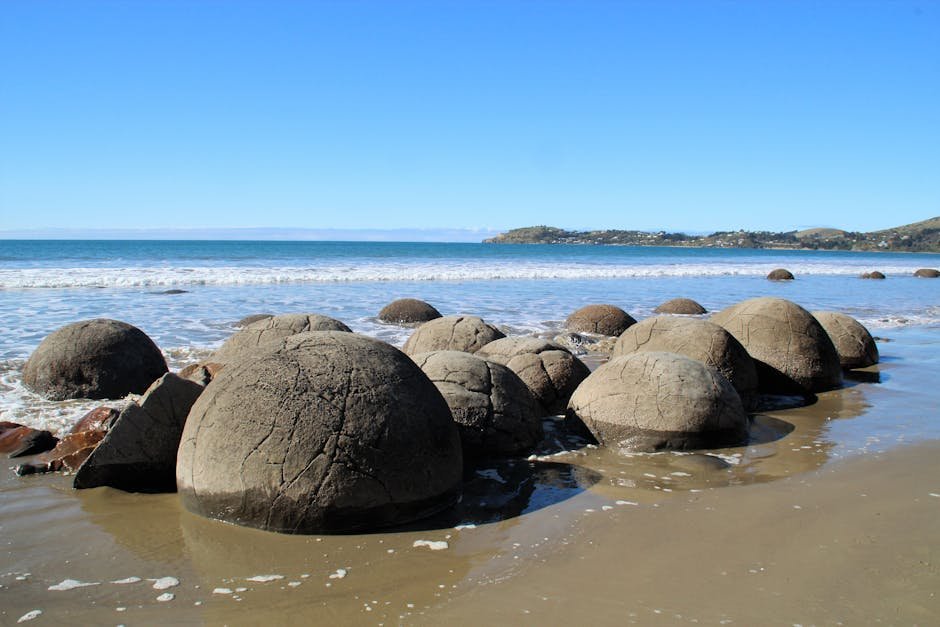
The Moeraki Boulders are not just any ordinary rocks; they are a geological puzzle that has intrigued scientists and nature enthusiasts alike. Formed millions of years ago, these boulders are concretions, which are hard, compact masses of sedimentary rock. The process of concretion involves minerals precipitating around a nucleus, often organic material, within sedimentary rock layers. Over time, these mineral deposits grow and harden, forming the spherical boulders we see today. This process is akin to how pearls form within oysters, with layers building upon each other over time to create a perfect sphere.
The Role of Erosion in Revealing the Boulders
While the formation of the boulders occurred deep beneath the earth’s surface, their unveiling is a story of erosion. The soft mudstone surrounding the concretions was gradually worn away by natural forces like wind and water. As these forces eroded the softer material, the harder boulders were left exposed on the beach. This slow and steady unveiling is a testament to the power of nature’s sculpting hand, transforming hidden treasures into visible wonders for all to see.
Composition and Structure: More Than Meets the Eye

The Moeraki Boulders are primarily composed of mud, fine silt, and clay, cemented together by calcite. The intricate patterns and cracks, known as septaria, often seen on their surfaces are the result of differential shrinkage and expansion over time. These features add to the boulders’ mystique, with their vein-like structures resembling the networks of nerves or ancient maps. Each boulder tells a unique story, etched into its surface by the passage of time and the forces of nature.
Global Comparisons: Moeraki’s Unique Spheres
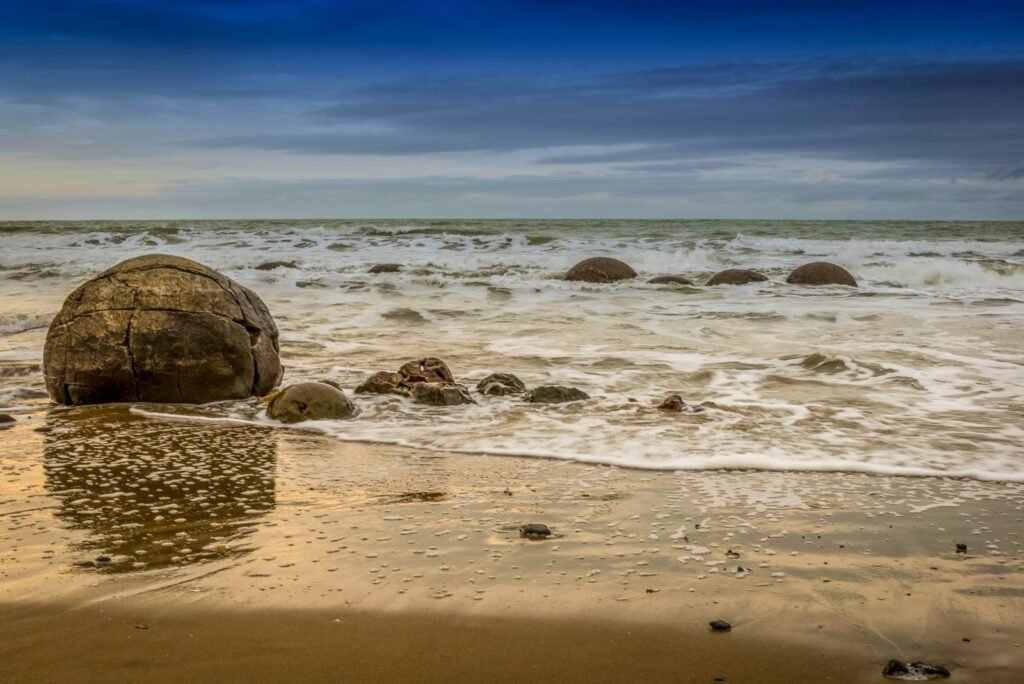
While the Moeraki Boulders are certainly unique, they are not the only spherical rock formations in the world. Similar boulders can be found in places like Bowling Ball Beach in California and the Cannonball River in North Dakota. However, the Moeraki Boulders stand out due to their size, number, and the sheer perfection of their spherical shapes. These characteristics, combined with their picturesque location, make them a standout among their global counterparts.
Myths and Legends Surrounding the Boulders
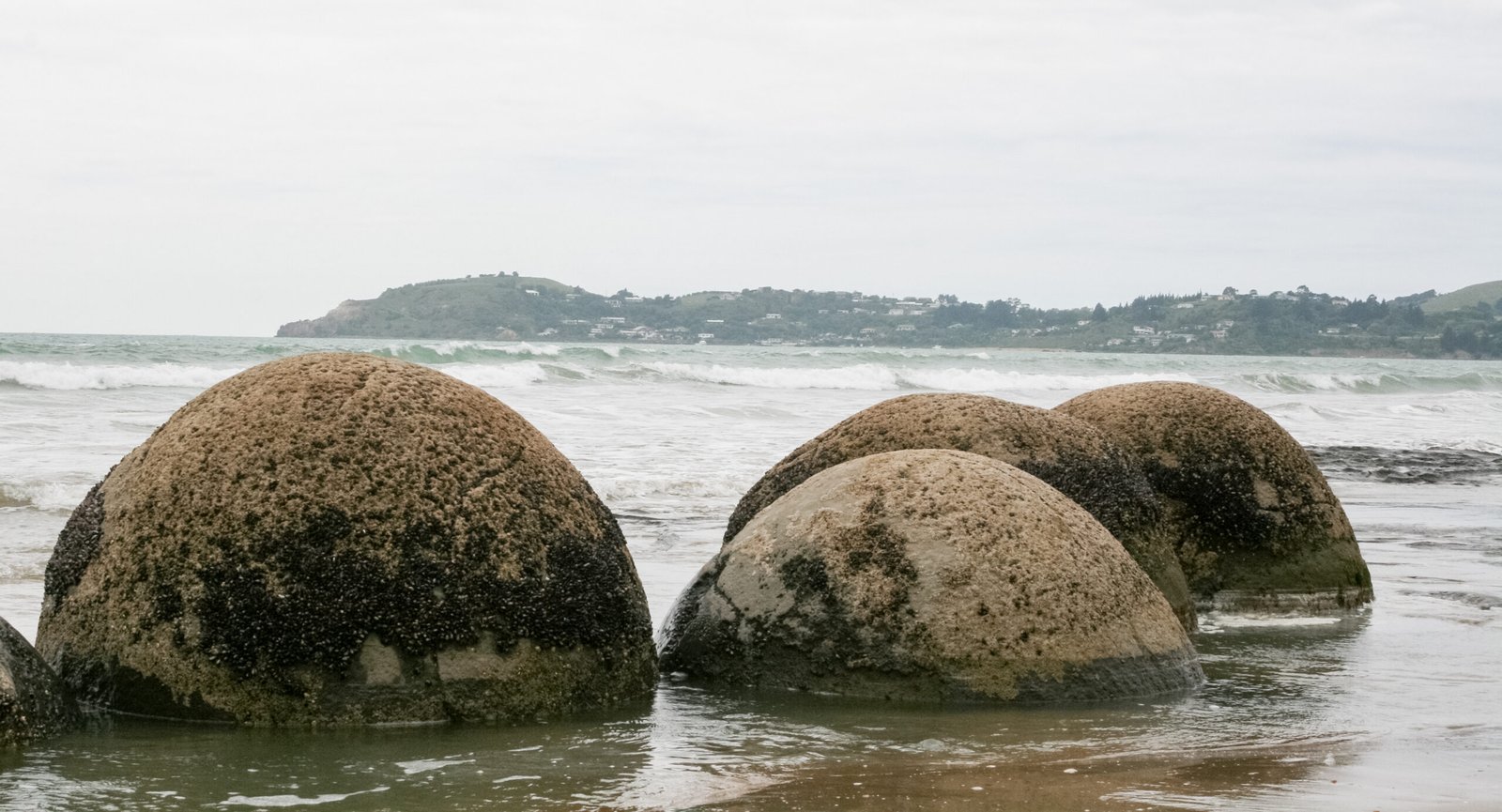
The Moeraki Boulders are steeped in local Maori legend, adding a layer of cultural significance to their geological wonder. According to Maori folklore, the boulders are the remains of eel baskets, calabashes, and kumara from the wreck of the Arai-te-uru, a large sailing canoe. This story adds a mythical dimension to the boulders, blending cultural heritage with natural history and enriching the narrative of their origins.
The Scientific Significance of the Moeraki Boulders
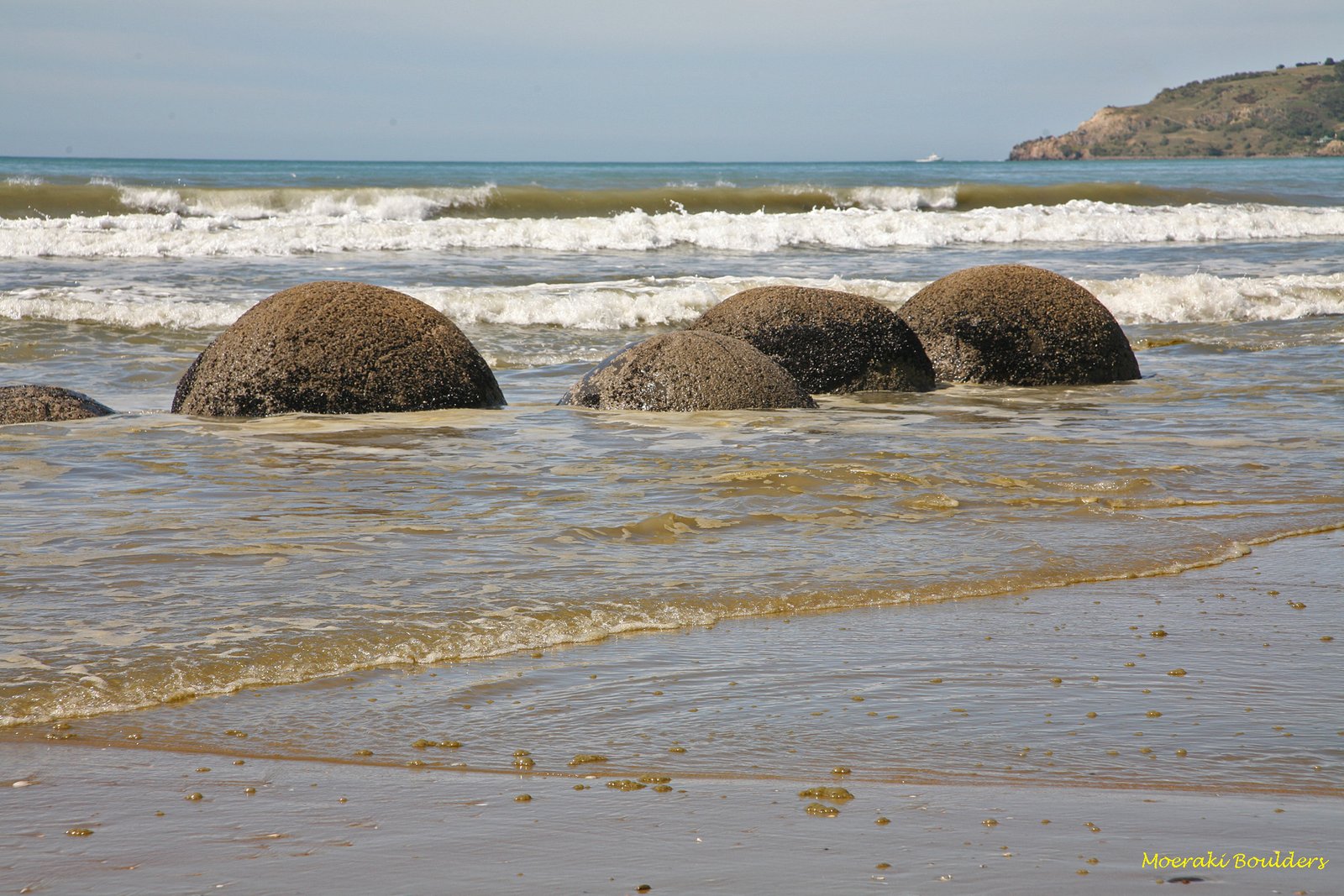
From a scientific perspective, the Moeraki Boulders offer valuable insights into the geological history of the region. Studying these formations helps scientists understand the processes of sedimentation, concretion, and erosion in coastal environments. By examining the minerals and structures within the boulders, researchers can piece together the environmental conditions that prevailed millions of years ago, contributing to our broader understanding of Earth’s history.
Visiting the Moeraki Boulders: A Natural Wonder

For those who venture to Koekohe Beach, the Moeraki Boulders offer a mesmerizing spectacle. Visitors can walk among the boulders, marveling at their size and symmetry, and take in the stunning coastal scenery. Whether you’re a geology enthusiast, a nature lover, or simply a curious traveler, the Moeraki Boulders are a must-see destination that promises to leave a lasting impression.
Preservation Efforts: Protecting a Geological Treasure
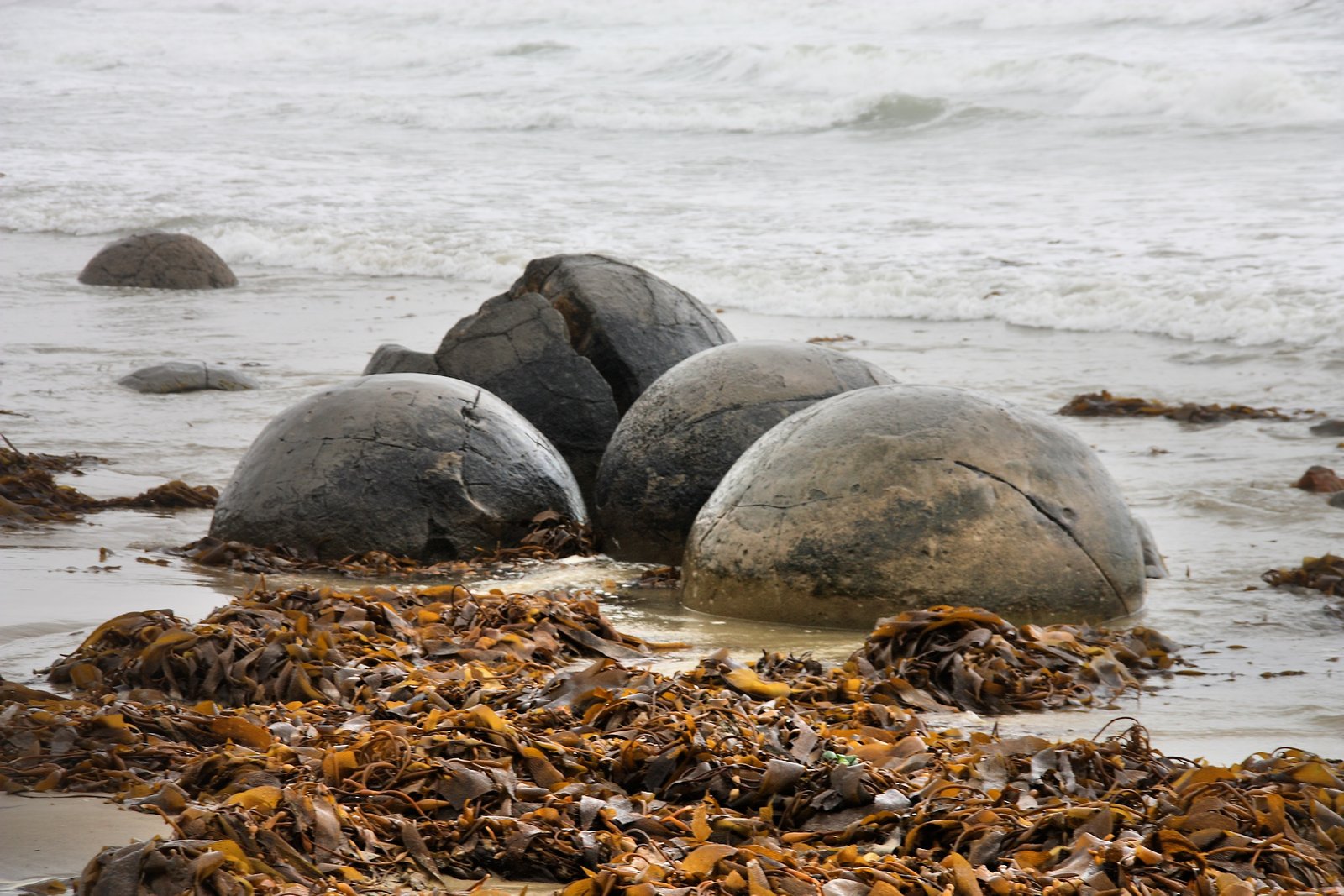
Due to their popularity and the natural forces of erosion, the Moeraki Boulders face challenges in terms of preservation. Efforts are underway to protect these geological treasures from human impact and natural degradation. Conservation initiatives aim to balance public access with the need to safeguard these unique formations for future generations. By raising awareness and promoting responsible tourism, we can ensure that the Moeraki Boulders remain a source of wonder and inspiration for years to come.
Nature’s Artistry: A Lesson in Patience and Time
The Moeraki Boulders serve as a striking reminder of nature’s artistry and the passage of time. Their formation is a testament to the patience and persistence of natural processes, sculpting beauty from simplicity over millions of years. Like nature’s own time capsules, these boulders encapsulate the history of the earth within their stone layers, inviting us to ponder the mysteries of our planet’s past.
Conclusion: Embracing the Mystery
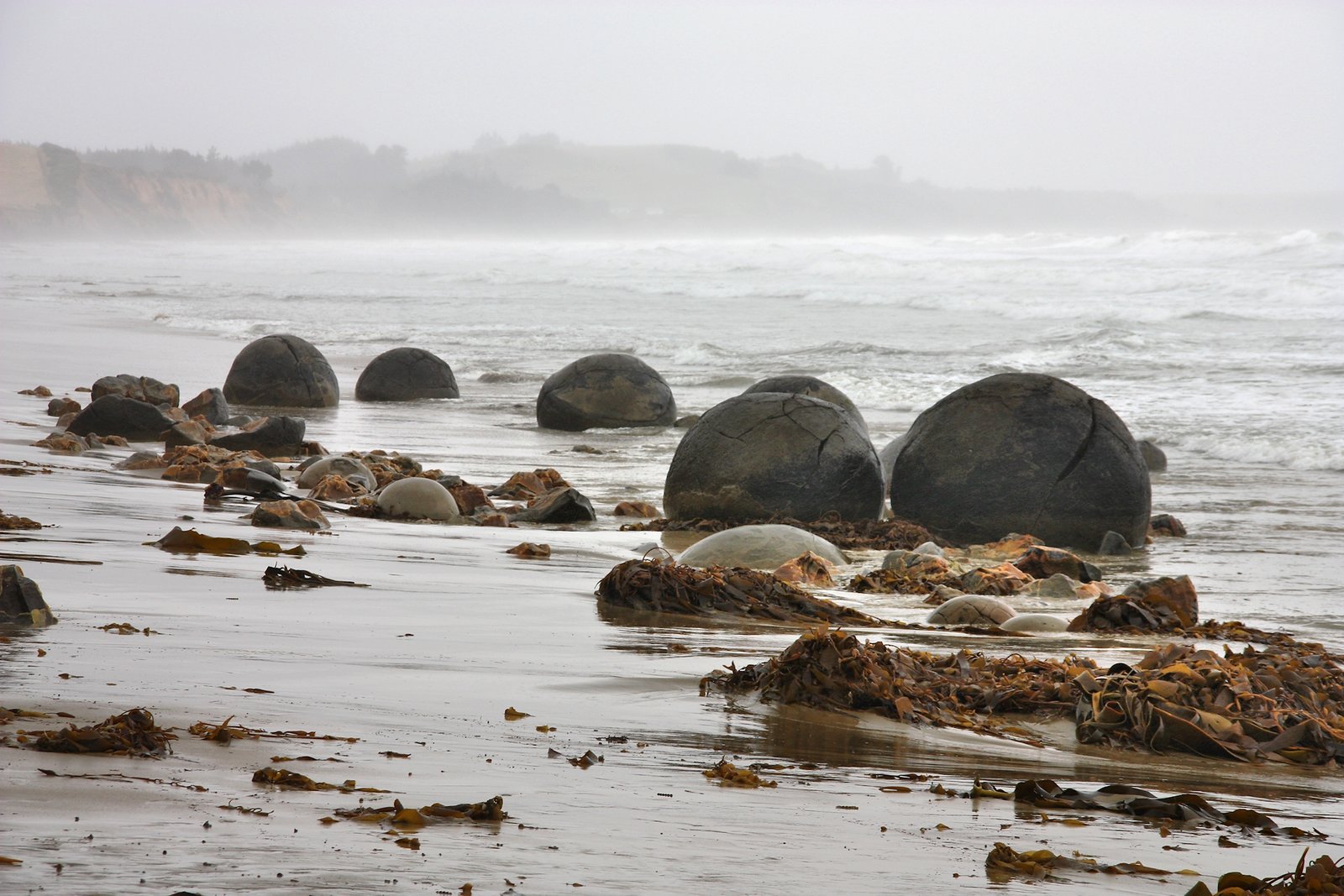
In the end, the Moeraki Boulders stand as a symbol of the Earth’s enduring mysteries. They challenge us to look beyond the surface and appreciate the intricate processes that shape our world. As we explore these almost perfect spheres, we are reminded of the wonders that nature holds and the stories etched into the land we call home. Embrace the mystery, and let the Moeraki Boulders inspire a sense of curiosity and wonder in your own explorations of the natural world.




